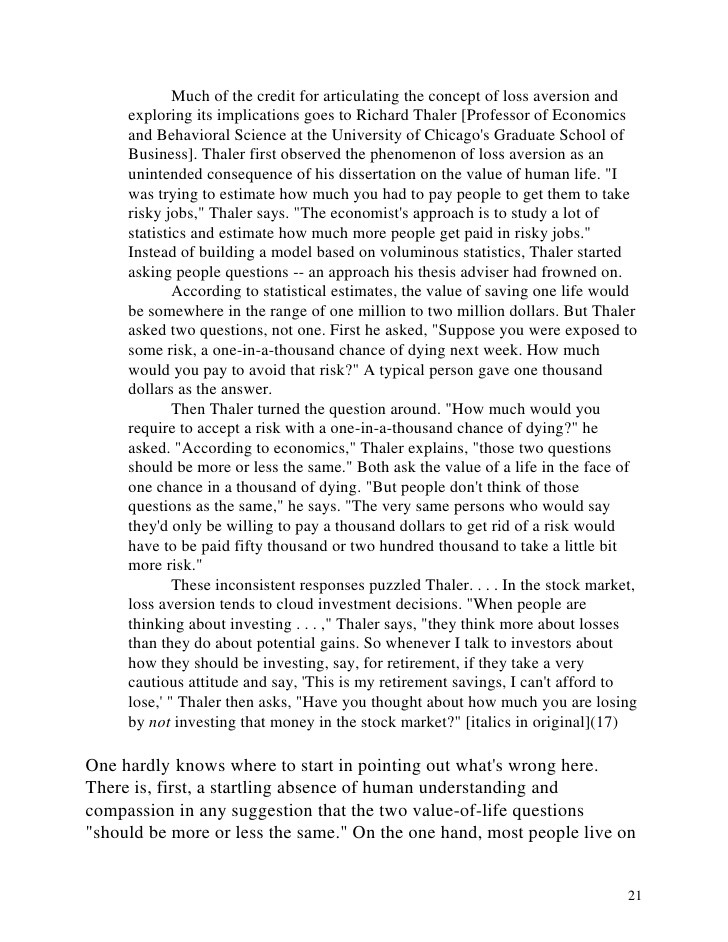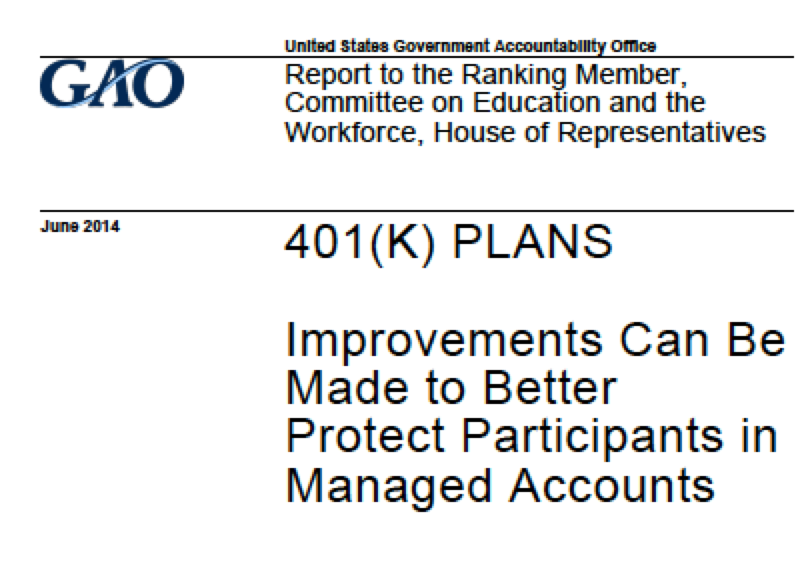From Theory to Practice How to Apply MPT Concepts to Your 401(k) Plan
Post on: 17 Апрель, 2015 No Comment

Modern Portfolio Theory. It sounds highly academic and esoteric. But in fact Modern Portfolio Theorycommonly referred to as simply MPTis the accepted approach to investment and portfolio management today.
Fortunately, you dont need a Ph.D. in investment theory to benefit from the implications of MPT. In fact, the general concepts can guide you in better managing your own 401(k) portfolio. Just what is MPT?
There are two major parts to MPT:
- The first part is centered around the idea that the best combination of assetsyour investment portfolioshould be developed by focusing on how the various components perform relative to each other.
The following four steps can guide you in carrying out an investment management process that is consistent with the tenets of the Modern Portfolio Theory (MPT).
1) Determine Your Risk/Return Preference
Some people mistakenly think that MPT suggests that they should buy and hold a low-cost stock index fund. It does not. Rather, it says that each investor should first determine his or her target asset allocation.
Although future returns are unknown, portfolios composed of a mix of stocks and bonds will offer a better risk/return trade-off than portfolios composed primarily of bonds.
The amount you commit to stocks is a function of how much risk you can tolerate. The ability to keep your stock portion invested in the stock market during the 2000-2002 bear market may help you determine your ability to bear stock market risk.
2) Form a Diversified Portfolio
The first part of this step is to select the asset classes in which you wish to invest.
Which should you include? Model portfolios recommended by investment professionals suggest that the major asset classes are U.S. stocks, international stocks, and U.S. high-grade bonds (including cash). Furthermore, with the possible exception of portfolios for retirees, model portfolios consistently recommended that international stocks should consist of between 15% and 30% of the stock portfolio.
Notably, no model portfolios recommend allocations to hedge funds or international bonds.
The second step in forming a diversified portfolio is to determine your target allocation for each asset class. This target allocation can be limited to the three major asset classes. For example, it may be 45% U.S. stocks, 15% international stocks, and 40% high-grade bonds.
Alternatively, some individuals prefer to separate U.S. stocks into smaller sub-asset classes like large-cap growth, large-cap value, and small-cap stocks. However, MPT and history suggest that the U.S. stock portfolio should be broadly diversified across size (large-cap through small-cap) and styles (value and growth stocks). Similarly, international stocks should contain stocks in developed markets across Western Europe, Japan, and Australia.
3) Select Mutual Funds
Although individuals can invest in individual securities or mutual funds, the latter is usually the only option in a 401(k) plan, so it will be emphasized here.
One prudent strategy is to invest your entire U.S. stock portion in an index fund, or a low-cost active fund that benchmarks a total stock market index fund like the Russell 3000 or Dow Jones Wilshire 5000 index.
Another prudent strategy would be to invest in separate index funds to create a portfolio tilt toward smaller or larger stocks. Small tilts away from a size-neutral or style-neutral allocation are examples of tactical asset allocation, and are not considered imprudent.

International diversification can be achieved by investing in an index fund or active fund that benchmarks a total international stock index of the developed markets.
SPECIAL OFFER: Get AAII membership FREE for 30 days!
Get full access to AAII.com, including our market-beating Model Stock Portfolio, currently outperforming the S&P 500 by 4-to-1. Plus 60 stock screens based on the winning strategies of legendary investors like Warren Start your trial now and get immediate access to our market-beating Model Stock Portfolio (beating the S&P 500 4-to-1) plus 60 stock screens based on the strategies of legendary investors like Warren Buffett and Benjamin Graham. PLUS get unbiased investor education with our award-winning AAII Journal. our comprehensive ETF Guide and more – FREE for 30 days
The U.S. bond market can be separated into investment-grade or better (high-grade) and low-grade bonds. The Lehman Brothers aggregate index represents the high-grade bond market. One prudent strategy would be to invest in an index fund, or low-cost active fund that benchmarks this or a similar index. In short, it is not difficult to attain a well-diversified prudent portfolio. And once you have attained a well-diversified portfolio, you should stick to it, which brings us to the last step.
4) Rebalance Periodically
MPT would suggest that investors rebalance their portfolios periodically. The purpose of rebalancing is to allow you to maintain a stable risk exposure. For example, if your target asset allocation is 45% U.S. stocks, 15% international stocks, and 40% U.S. bonds then, unless something happens to cause you to change your target asset allocation, you should rebalance back to these weights periodically.
At what point is your portfolio considered out of balance? One general rule would be to rebalance whenever the actual asset allocation to a broad asset class varies at least 10% from the target allocation. For example, if your target allocation is 40% bonds and your bond allocation varies outside the 30% to 50% range, then rebalancing is in order. For narrower asset classes like international stocks, the range may be plus or minus 5%.
Rebalancing can be done by shifting funds from one fund to another. Another approach to rebalancing is to allocate new investment funds to the underweight asset class.
In addition, as you age, your target asset allocation may slowly become more conservative. If so, then you should rebalance your portfolio back to the slowly changing target allocations.
Discussion
Paul from CT posted over 4 years ago:
Hasn’t modern portfolio theory been blown apart by some recent academics and investment professionals, namely James Montier?
Gerald from DE posted over 3 years ago:
Under diversification, I’d suggest calculating the standard deviation of your portfolio (to determine the amount of risk associated with your portfolio),estimating the expected return and cthen calculating the risk/return ratio. You could repeat for different allocations of asset classes until you find a risk level and return that meets your needs.














